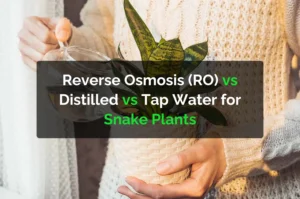Snake plants are one of the most popular indoor plants because they are easy to care for, look beautiful, and can survive in tough conditions. Many plant lovers often ask, “Can I use coffee grounds for my snake plant?” Let’s simply explore this question and see if coffee grounds are good or bad for your snake plant.
What Are Coffee Grounds?
Coffee grounds are the leftover bits of coffee after brewing. They are rich in nutrients like nitrogen, potassium, and magnesium. These nutrients are important for plant growth. Some people use coffee grounds as a natural fertilizer for their plants.
Are Coffee Grounds Good for Snake Plants?
The short answer is that coffee grounds can be good, but only in small amounts and with care.
Snake plants do not need a lot of fertilizer. They prefer well-draining soil and dry conditions. Using too many coffee grounds can make the soil heavy and hold too much moisture, which is not good for snake plants.
Benefits of Using Coffee Grounds for Snake Plants
Here are some of the benefits of using coffee grounds for your snake plant:
1. Rich in Nutrients
Coffee grounds contain nitrogen, which helps in healthy leaf growth. They also have other minerals like potassium and magnesium that support the plant’s overall health.
2. Natural Fertilizer
Instead of chemical fertilizers, coffee grounds offer a natural way to feed your snake plant.
3. Helps with Pest Control
Coffee grounds may help keep pests like ants and snails away due to their smell and texture.
Risks of Using Coffee Grounds for Snake Plants
Although coffee grounds can be helpful, using them the wrong way can harm your plant. Here’s why:
1. Too Much Moisture
Snake plants hate wet soil. Coffee grounds can hold water and make the soil too moist, leading to root rot.
2. Acidic Soil
Coffee grounds are slightly acidic. If used too much, they can change the pH of the soil, which may not be suitable for snake plants.
3. Mold Growth
Wet coffee grounds can grow mold if they are not dried or used correctly. Mold is harmful to houseplants.
How to Use Coffee Grounds for Snake Plants Safely
If you want to try using coffee grounds for your snake plant, here are some safe tips:
1. Use Coffee Grounds in Compost
The best way is to mix used coffee grounds with other compost materials. This balances the nutrients and reduces the risk of too much moisture or acidity.
2. Mix with Potting Soil
You can mix a small amount (about 1 tablespoon) of dried coffee grounds into your snake plant’s soil once a month. Make sure the soil stays dry and well-draining.
3. Liquid Coffee Ground Fertilizer
Soak a small amount of used coffee grounds in water for a day or two. Then, use this water to lightly water your snake plant once a month. This gives nutrients without making the soil too heavy.
Best Alternatives to Coffee Grounds
If you’re unsure about using coffee grounds, here are some safe and simple alternatives:
- Cactus or succulent fertilizer – Works great for snake plants
- Banana peel water – Adds potassium naturally
- Compost tea – Offers balanced nutrients
- Worm castings – A mild organic fertilizer perfect for indoor plants
Frequently Asked Questions (FAQs)
Can I put fresh coffee grounds directly on my snake plant soil?
No, fresh coffee grounds are too acidic and wet. They can cause root rot and harm your plant.
How often can I use coffee grounds on my snake plant?
Once a month is enough, and always in small amounts. Avoid overusing it.
Is it better to compost coffee grounds before using them?
Yes, composting balances the acidity and reduces the risk of overwatering.
Can coffee grounds replace fertilizer for snake plants?
Not completely. They can be a small part of a natural feeding plan, but not the only source of nutrients.
Will using coffee grounds attract bugs?
If used in large amounts or if left wet on top of the soil, coffee grounds can attract bugs or mold.
Conclusion
So, do snake plants like coffee grounds? The answer is yes, but only if used carefully and in small amounts. Coffee grounds offer nutrients that can help your plant grow, but too much can lead to root rot, mold, or soil problems. If you’re new to plant care, a complete snake plant care kit like this comes with tools to make it effortless. The safest method is to compost the grounds first or use them as a liquid feed. Remember, snake plants are tough and don’t need a lot of feeding. A little care goes a long way!






